A Monetary History of German East Africa
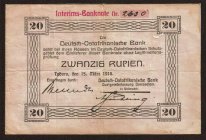 From time immemorial Europeans sought to explore and exploit foreign lands for their own benefit. The wealth of these lands, of course, flowed to the conquering power doing little for the natives who were thus "colonized". By the 1860s European attention was drawn to the continent of Africa, then in the process of discovery.
From time immemorial Europeans sought to explore and exploit foreign lands for their own benefit. The wealth of these lands, of course, flowed to the conquering power doing little for the natives who were thus "colonized". By the 1860s European attention was drawn to the continent of Africa, then in the process of discovery.
Britain, France, Germany, Italy, Belgium, Portugal and Spain all laid claim to African territory. This article explores how Germany came to colonize German East Africa, giving a detailed account of all coin issues - both governmental and private. German East Africa became a very profitable and well ordered colony, with an outstanding monetary system of its own. When World War I came along, the colony found itself isolated from the mother country, unable to rely on help from outside quarters. Relying upon national pride and a great deal of ingenuity, the Germans were able to resist the British invasion until the homeland capitulated in 1918.
Of particular interest are the German East African bank notes which offer an infinite variety of issues which illustrate the will and resolve of the German and native Askaris to win the war and keep their colony intact.
Click to download PDF here.
Some Previously Unlisted Bank Notes of the German Independent States
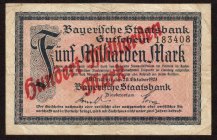 Not to be found in any catalog I am aware of are a series of German bank notes which belong to the German "Independent States". Germany, prior to unification consisted of four kingdoms, six grand duchies, five duchies, seven principalities and three free cities. When Wilhelm I of Prussia was declared the first German emperor by the Reichstag in 1871, not everyone was wildly enthusiastic. The chief dissenters were the southern kingdoms of Bavaria and Wurttemberg and the Duchy of Baden. As a concession for these states to join the German Empire, the Reischstag granted them concessions, which included to right to continue issuing their own stamps, coins and paper money.
Not to be found in any catalog I am aware of are a series of German bank notes which belong to the German "Independent States". Germany, prior to unification consisted of four kingdoms, six grand duchies, five duchies, seven principalities and three free cities. When Wilhelm I of Prussia was declared the first German emperor by the Reichstag in 1871, not everyone was wildly enthusiastic. The chief dissenters were the southern kingdoms of Bavaria and Wurttemberg and the Duchy of Baden. As a concession for these states to join the German Empire, the Reischstag granted them concessions, which included to right to continue issuing their own stamps, coins and paper money.
This article explores some of these interesting and oft overlooked issues.
Click to download PDF here.
The Significance of Stamps Used on Bank Notes
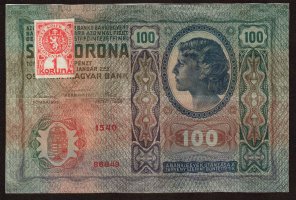 Every collector, sooner or later, runs into a bank note or two with adhesive stamps affixed to them. This article, originally written by Dr. Arnold Keller, the dean of paper money collectors, explores the various reasons governments altered the original use of bank notes by affixing stamps thereto. Some stamps were attached to merely authenticate the value of the note itself after a change in government, other uses had tax implications, while still other applications were efforts to alter the economy of a region or whole country. Many of these schemes were ingenious beyond belief, and many of them actually worked!
Every collector, sooner or later, runs into a bank note or two with adhesive stamps affixed to them. This article, originally written by Dr. Arnold Keller, the dean of paper money collectors, explores the various reasons governments altered the original use of bank notes by affixing stamps thereto. Some stamps were attached to merely authenticate the value of the note itself after a change in government, other uses had tax implications, while still other applications were efforts to alter the economy of a region or whole country. Many of these schemes were ingenious beyond belief, and many of them actually worked!
All examples of stamps found on bank notes which are known to the author are enumerated in this article. Undoubtedly there are other examples. Fellow collectors who know of other examples are invited to share their knowledge with us.
Click to download PDF here.
German Railroad Notes of the 1923 Hyperinflation
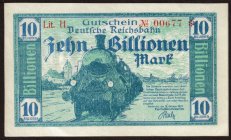 Germany offers many diverse collecting opportunities for coin and paper money enthusiasts. Among these, its varied paper money issues contain numerous areas of specialization for the collector. One such area comprises the banknotes of the German national railroad (the Deutsche Reichsbahn), and its regional offices (the various Reichsbahndirektions). These notes were issued, under law, as an emergency expedient at the height of the post World War I inflation. For those who have a passion for trains and railroading, these notes hold a special interest.
Germany offers many diverse collecting opportunities for coin and paper money enthusiasts. Among these, its varied paper money issues contain numerous areas of specialization for the collector. One such area comprises the banknotes of the German national railroad (the Deutsche Reichsbahn), and its regional offices (the various Reichsbahndirektions). These notes were issued, under law, as an emergency expedient at the height of the post World War I inflation. For those who have a passion for trains and railroading, these notes hold a special interest.
Click to download PDF here.
A Monetary History of the Former German Colony of Kiaochou
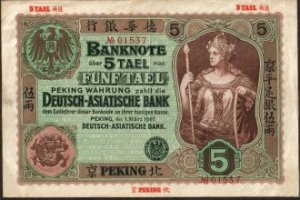 The defeat of China after two Opium Wars left the Ch'ing Dynasty weak and disorganized. European powers were quick to exploit this weakness. Both Britain and France placed exorbitant demands upon China in the form of monetary indemnity for expenses they had incurred during the wars, and for the outright concession of Chinese territory.
The defeat of China after two Opium Wars left the Ch'ing Dynasty weak and disorganized. European powers were quick to exploit this weakness. Both Britain and France placed exorbitant demands upon China in the form of monetary indemnity for expenses they had incurred during the wars, and for the outright concession of Chinese territory.
Sensing this weakness, other European powers were quick to seize territorial concessions and to set up their own 'spheres of influence' within China for commercial purposes. This is the story of how Germany became a colonial player in the China trade.
Click to download PDF here.
Siege Notes - Windows to the Past - Part I
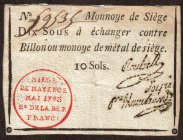 Siege warfare has been practiced by invading armies since time immemorial. As a form of warfare it attained its highest degree of development in Europe from the late 1500s until the introduction of more powerful weapons made the siege of towns and cities unnecessary. Throughout the years, a by-product of this type warfare was the production of "siege notes", paper money of necessity, to be used to sustain commerce for those under siege.
Siege warfare has been practiced by invading armies since time immemorial. As a form of warfare it attained its highest degree of development in Europe from the late 1500s until the introduction of more powerful weapons made the siege of towns and cities unnecessary. Throughout the years, a by-product of this type warfare was the production of "siege notes", paper money of necessity, to be used to sustain commerce for those under siege.
Part I discusses siege techniques and the sieges of Leyden, Lyon, Colberg, Mayence, Mantova, Erfurt, Zara, Palmanova and Osoppo, all of which issued siege notes during their defense.
Click to download PDF here.
The Use of Bank Notes as an Instrument of Propaganda - Part I
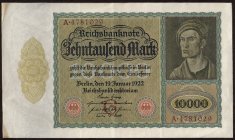 All propaganda is designed to influence public opinion. Such communications take many forms including the subtle use of propaganda both printed and concealed which may be found on a nation's paper currency. Paper money can be a handy tool in the hands of a cunning propagandist, as seen in the examples given in Part I. These examples cover propaganda found on paper money issues from the American Revolution through the occupation of Europe during World War II.
All propaganda is designed to influence public opinion. Such communications take many forms including the subtle use of propaganda both printed and concealed which may be found on a nation's paper currency. Paper money can be a handy tool in the hands of a cunning propagandist, as seen in the examples given in Part I. These examples cover propaganda found on paper money issues from the American Revolution through the occupation of Europe during World War II.
Click to download PDF here.